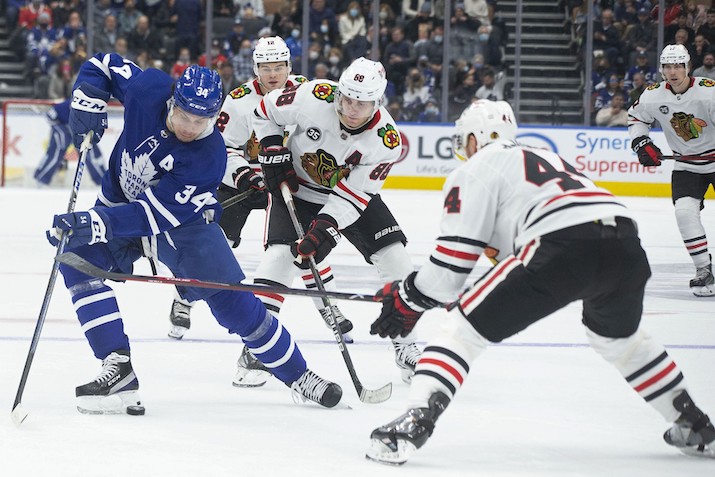NHL, NBA Resurrect Augmented Crowd Sound for Canadian Venues
Some teams opt for empty seats as provinces mandate capacity limits
Story Highlights
Several Canadian NHL teams, including the Toronto Maple Leafs and Ottawa Senators, and the NBA’s Toronto Raptors will be playing in front of no crowds or much smaller audiences at home for the foreseeable future. That has put the COVID-engendered audio category of augmented crowd sound back in play, at least in the Great White North.
The restrictions are based on province-mandated COVID policies. At the end of December, the Ontario government announced a limit on the number of people allowed in an arena: 1,000 or 50% of capacity, whichever is less. The Leafs and Raptors, owned by the same company, quickly responded, announcing that no fans would be admitted to any of its teams’ venues.
This has prompted the resurrection of augmented-crowd-sound audio, innovative systems that were rushed into service by a number of companies after the onset of the pandemic but had been silent for most of 2021 as venues once again allowed fans into games.

The NHL’s Toronto Maple Leafs are among the Canadian teams that will be playing in empty or capacity-limited venues.
Firehouse Productions, which was one of the first with such solutions in the market in 2020 and notably developed the crowd-sound systems used in the NBA’s “bubble” in Orlando during that year’s disrupted season, says it has shipped seven of its crowd-sound systems to Canadian professional sports teams, including the Maple Leafs and Raptors (the latter are allowed to play in their home arena this season, having spent the previous season in Florida) and the Montreal Canadiens. However, not all of those teams have deployed the systems for their game broadcasts.
Although the audience restrictions at games are based on local-government regulations, the request for crowd-sound systems came from the league, according to Firehouse Productions VP Mark Dittmar, who designed the system.
“[The league] reached out to us about a month ago and said, ‘We think this is coming,’ and asked if we could put the systems together,” he says. “We worked on getting them up to the teams so that, if it happened, we weren’t frantically overnighting things. And we did some training with various [operators] to get them back up to speed on it.”
The Need for Speed
The system, the same one Firehouse Productions developed for the NHL last season, is designed to be operated by a single user working a pair of Novation Launchpad controllers, whose individual touchpads activate prerecorded crowd sounds ranging in intensity from background murmurs to loud reactions to on-ice moments, such as scores and near-misses. The sound is played through each arena’s installed PA system and picked up on-air through the broadcast’s ambient and crowd microphones.
The NHL’s system is distinct from the one the company devised for the NBA two years ago. That one had two mixers on the Launchpad devices as well as another mixer controlling the overall levels of games and a DJ playing music cues from an iPad at key moments.
“We were using the template from the NBA but realized that hockey is a significantly faster game [than basketball] and the audience responds at a significantly faster pace,” Dittmar explains. “We had to do a lot of editing to get things to pop at the speed they needed to, as well as come up with new sounds with a lot of it.”
The NHL crowd-sound system takes into account the very specific crowd dynamics of hockey, whose reactions he says tend to wax and wane en masse. The NBA system, on the other hand, has more nuances built in, such as effects like air balls and thundersticks, and call-and-response interplay between the stands and the DJ or the arena announcer. It also has the ability to hear the occasional individual voice, something the higher-decibel ambience of a hockey rink rarely allows.
Dittmar notes that the NHL system also doesn’t have as much baseline-customization per team as the NBA’s, partly due to its streamlined operation for the sport’s speed. However, he adds, once the initial two weeks of system implementation and operator training are finished, teams can send requests for specific crowd sounds, such as chants and reactions, which Firehouse Productions’ staff will develop into an audio file that can be emailed back to the system operator.
“On average, [the NHL system] has to react faster, so we designed it for a single operator,” he says. “But we’ve taken all of our experience on this type of system and refined it even further. When they need it, it’ll be ready.”
